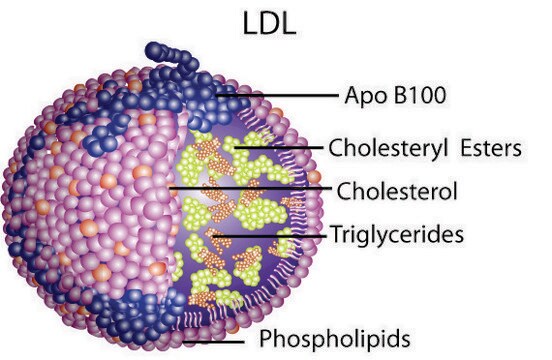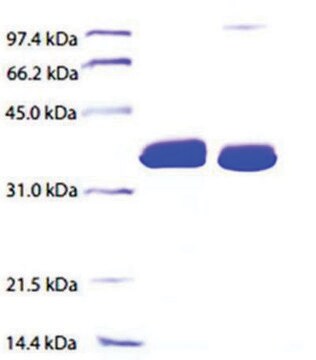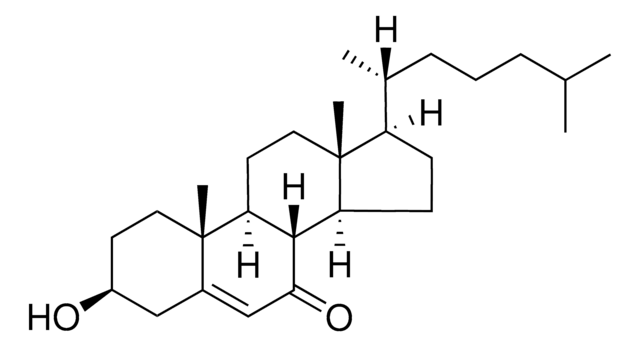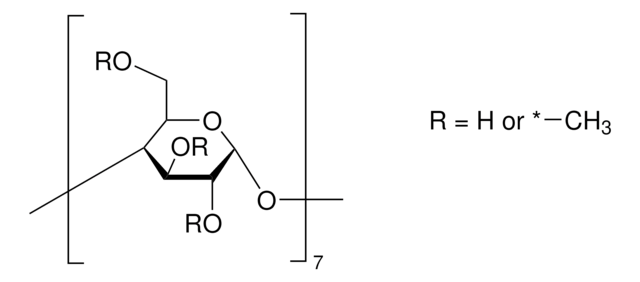437647
Lipoproteins, Very Low Density, Human Plasma
Synonym(s):
VLDL
Sign Into View Organizational & Contract Pricing
All Photos(1)
About This Item
UNSPSC Code:
12352202
NACRES:
NA.25
Recommended Products
Assay
≥95% (of total lipoprotein content, electrophoresis)
Quality Level
form
liquid
manufacturer/tradename
Calbiochem®
storage condition
do not freeze
shipped in
wet ice
storage temp.
2-8°C
General description
A 5 mg vial contains ~1 mg of protein.
Native very low density lipoproteins from human plasma. VLDL transports hepatic synthesized triglycerides and cholesterol. May counteract the inhibitory effect of glucocorticoids on arachidonic acid release and prostaglandin I2 formation in vascular smooth muscle cells. (Composition: 88-95% lipid; 5-12% protein. Note: 5 mg vial contains 1 mg of protein.)
Native very low density lipoproteins from human plasma. VLDL transports liver-synthesized triglycerides and cholesterol. May counteract the inhibitory effect of glucocorticoids on arachidonic acid release and prostaglandin I2 formation in vascular smooth muscle cells. Composition: 88-95% lipid; 5-12% protein.
Packaging
Please refer to vial label for lot-specific concentration.
Warning
Toxicity: Standard Handling (A)
Other Notes
Petrichenko, I., et al. 1993. Biochim. Biophys. Acta1166, 183.
Legal Information
CALBIOCHEM is a registered trademark of Merck KGaA, Darmstadt, Germany
Storage Class Code
11 - Combustible Solids
WGK
WGK 1
Flash Point(F)
Not applicable
Flash Point(C)
Not applicable
Certificates of Analysis (COA)
Search for Certificates of Analysis (COA) by entering the products Lot/Batch Number. Lot and Batch Numbers can be found on a product’s label following the words ‘Lot’ or ‘Batch’.
Already Own This Product?
Find documentation for the products that you have recently purchased in the Document Library.
Wojciech Paslawski et al.
Proceedings of the National Academy of Sciences of the United States of America, 116(30), 15226-15235 (2019-07-05)
The progressive accumulation, aggregation, and spread of α-synuclein (αSN) are common hallmarks of Parkinson's disease (PD) pathology. Moreover, numerous proteins interact with αSN species, influencing its toxicity in the brain. In the present study, we extended analyses of αSN-interacting proteins
Our team of scientists has experience in all areas of research including Life Science, Material Science, Chemical Synthesis, Chromatography, Analytical and many others.
Contact Technical Service







